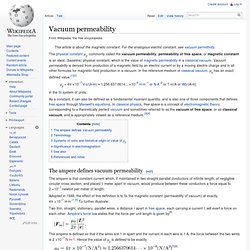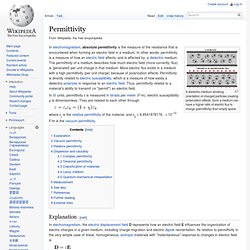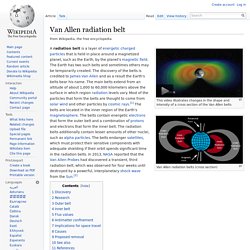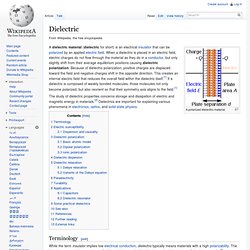Zoom
Trash

Vacuum permeability. The physical constant μ0, commonly called the vacuum permeability, permeability of free space, or magnetic constant is an ideal, (baseline) physical constant, which is the value of magnetic permeability in a classical vacuum.

Vacuum permeability is derived from production of a magnetic field by an electric current or by a moving electric charge and in all other formulas for magnetic-field production in a vacuum. In the reference medium of classical vacuum, µ0 has an exact defined value:[1][2] in the SI system of units. As a constant, it can also be defined as a fundamental invariant quantity, and is also one of three components that defines free space through Maxwell's equations. In classical physics, free space is a concept of electromagnetic theory, corresponding to a theoretically perfect vacuum and sometimes referred to as the vacuum of free space, or as classical vacuum, and is appropriately viewed as a reference medium.[3][4] The ampere defines vacuum permeability[edit] Permittivity. A dielectric medium showing orientation of charged particles creating polarization effects.

Such a medium can have a higher ratio of electric flux to charge (permittivity) than empty space In electromagnetism, absolute permittivity is the measure of the resistance that is encountered when forming an electric field in a medium. In other words, permittivity is a measure of how an electric field affects, and is affected by, a dielectric medium. The permittivity of a medium describes how much electric field (more correctly, flux) is 'generated' per unit charge in that medium. More electric flux exists in a medium with a high permittivity (per unit charge) because of polarization effects. In SI units, permittivity ε is measured in farads per meter (F/m); electric susceptibility χ is dimensionless.
Where εr is the relative permittivity of the material, and ε0 = 8.8541878176.. × 10−12 F/m is the vacuum permittivity. Explanation[edit] Vacuum permittivity[edit] Its value is[1] where If. Van Allen radiation belt. This video illustrates changes in the shape and intensity of a cross section of the Van Allen belts Van Allen radiation belts (cross section) A radiation belt is a layer of energetic charged particles that is held in place around a magnetized planet, such as the Earth, by the planet's magnetic field.

The Earth has two such belts and sometimes others may be temporarily created. The discovery of the belts is credited to James Van Allen and as a result the Earth's belts bear his name. The main belts extend from an altitude of about 1,000 to 60,000 kilometers above the surface in which region radiation levels vary. Discovery[edit] Kristian Birkeland, Carl Størmer, and Nicholas Christofilos had investigated the possibility of trapped charged particles before the Space Age.[3] Explorer 1 and Explorer 3 confirmed the existence of the belt in early 1958 under James Van Allen at the University of Iowa.
Research[edit] Jupiter's variable radiation belts Outer belt[edit] Inner belt[edit] Causes[edit] Dielectric. A polarized dielectric material The study of dielectric properties concerns storage and dissipation of electric and magnetic energy in materials.[2] Dielectrics are important for explaining various phenomena in electronics, optics, and solid-state physics.

Terminology[edit] While the term insulator implies low electrical conduction, dielectric typically means materials with a high polarizability. The latter is expressed by a number called the relative permittivity (also known in older texts as dielectric constant). The term insulator is generally used to indicate electrical obstruction while the term dielectric is used to indicate the energy storing capacity of the material (by means of polarization).
The term "dielectric" was coined by William Whewell (from "dia-electric") in response to a request from Michael Faraday.[3][4] A perfect dielectric is a material with zero electrical conductivity. Electric susceptibility[edit] where is the electric permittivity of free space. by . For .